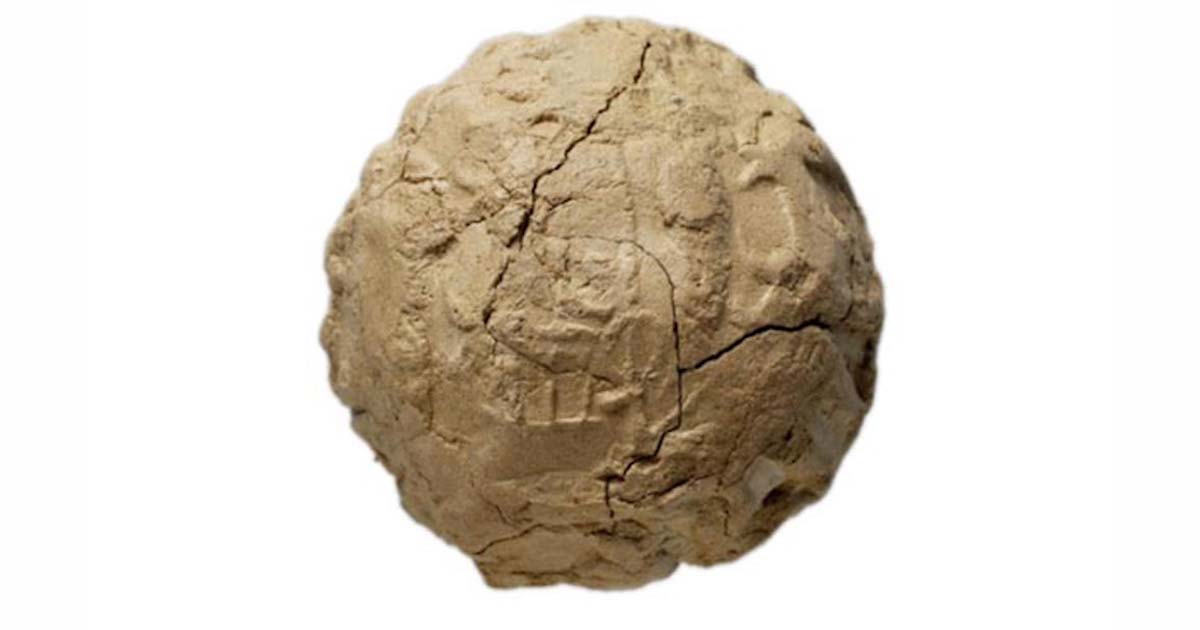Mesopotamian Clay Balls: Ancient Relics or Prehistoric Hard Drives?
Research conducted in late 2013 offered intriguing clues to decoding the secrets of the Mesopotamian clay balls, which date back 5,500 years. The study, which used CT scanning to look inside the clay balls, revealed that the balls may represent the world’s “very first data storage system.”

The Mesopotamian clay balls were found at the Chogha Mish site in Western Iran, a Chalcolithic settlement which was occupied from about 6800 BC. (Public domain)
Mesopotamian Clay Balls: Ancient Economic Records?
The Mesopotamian clay balls were found at the Choga Mish archaeological site in Western Iran in the late 1960s and have perplexed experts ever since. Their sizes vary from golf ball size to baseball size. To date, only about 150 intact examples of these Mesopotamian clay balls have been found in the region.
- The Solution to the 5,500-Year-Old Mesopotamian Clay Ball Enigma
- 9 Mysterious Undeciphered Codes and Inscriptions in History
Researchers have long believed that they were used to record economic transactions. This conclusion was based on an analysis of a 3,300-year-old clay ball found at a site in Mesopotamia that had 49 pebbles and a cuneiform text containing a contract commanding a shepherd to care for 49 sheep and goats.

A Mesopotamian clay ball. (Anna Ressman / Oriental Institute of the University of Chicago)
One Live Science report explained that some researchers have even referred to the Mesopotamian clay balls as “envelopes” since they contained information inside.
However, without further evidence this hypothesis remained just one possible explanation for the use and purpose. Furthermore, if the hypothesis proved correct, it is unclear how the devices would have worked to record the exchange of commodities in prehistoric times, before the invention of writing.

Cutting-edge research, using CT scans and 3D modelling, has created detailed models of the Mesopotamian clay balls and their contents without the need to break open the balls. (Oriental Institute of the University of Chicago)
Using Cutting-Edge Tech to Analyze Mesopotamian Clay Balls
Researchers used high-tech equipment and 3D modelling to look inside the balls and found that they contained tokens in a variety of geometric shapes. It is possible that the shapes conveyed numbers used in counting different types of products which were exchanged. If that's the case, it may be possible to crack the code by uncovering how token types cluster and vary.
Rather strangely, in one case CT scans of a Mesopotamian clay ball also revealed that one ball contained tokens which would have been wrapped in cloth before being put in the ball and then had a bitumen-type liquid poured over them. The reason for this still remains a mystery.

The interior of one of the Mesopotamian clay balls found broken at the Choga Mish site in Iran. (Anna Ressman / Oriental Institute of the University of Chicago)
According to an article published on NBC News, some of Mesopotamian clay balls also have tiny crisscrossing channels, which Christopher Woods, a professor at the University of Chicago's Oriental Institute, explained could have contained fine threads that connected together on the outside. The threads could have held labels, perhaps made out of wax, which reflected the tokens within the clay balls.

Brian Zimerle, from the Oriental Institute, creating a modern-day clay ball with tokens based on cutting-edge scientific research into the Mesopotamian clay balls. (Oriental Institute of the University of Chicago)
Mesopotamian Clay Balls Around the World?
The region that once contained the flourishing civilization of Mesopotamia is not the only place where clay or stone balls have been found. More than 400 carved stone balls were found in Scotland dating back to the Neolithic period between 3000 and 2000 BC, and thousands of baseball-sized clay balls were found in the ancient Neolithic city of Çatalhöyük in Turkey.
- Ten Amazing Artifacts from the Ancient World
- 17 Out-of-Place Artifacts Said to Suggest High-Tech Prehistoric Civilizations Existed
Is it a coincidence that these artifacts have been found in many countries around the world belonging to the same era? Were they used for the same purpose as the Mesopotamian clay balls? The latest research may bring us one step closer to understanding these mysterious relics, but there is still much to learn.
Top image: Mesopotamian clay balls have been unearthed in Iran. Source: Fair use




















Comments
You want answers ?? Break one open for crying out loud ! That goes for many objects found. To get answers then you can't be a wuss all your life...
The Clay balls could have been pressed into soft clay and then rolled to make further impressions, rather like seals/ scrolls. I would suggest that they are not the 'very first data storage systems', figure stones would be the earliest, much like on my blog.